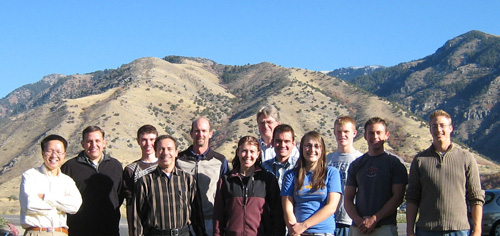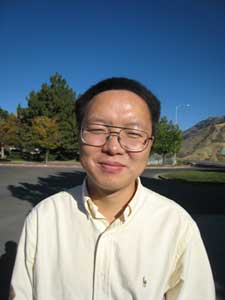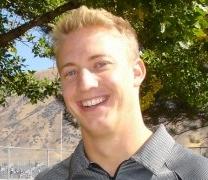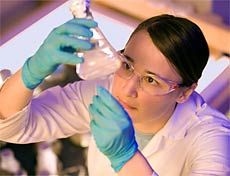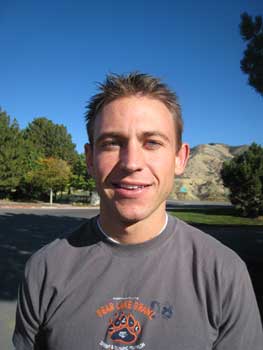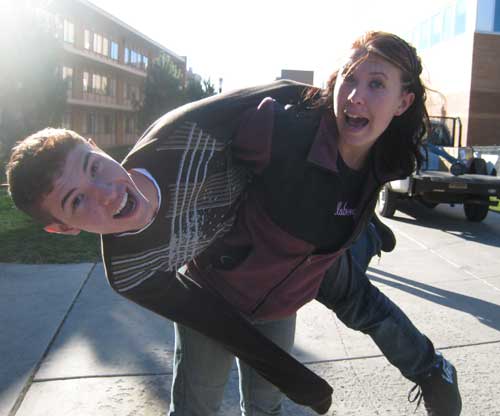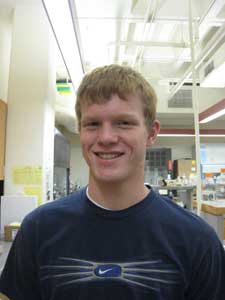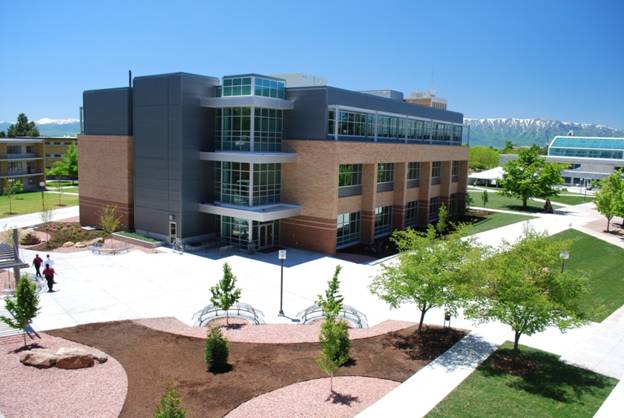Team:Utah State/Team
From 2008.igem.org
(→What we did) |
|||
| Line 91: | Line 91: | ||
| - | Trent | + | Trent Mortensen took an active role in the planning of the project, group coordination, advising professor consultation, laboratory work, ordering of materials, lab maintenance, Wiki preparation, documentation, and presentation preparations throughout the course of the project. |
Libbie: | Libbie: | ||
| Line 97: | Line 97: | ||
Jun-Ling Huo | Jun-Ling Huo | ||
| - | Stephen Merrigan | + | Stephen Merrigan is currently working on a MS in Biological Engineering at Utah State, and has a background in Microbiology. During the first few months of the project Stephen did background research on an experiment topic that was not the final 2008 iGEM project. Some of the work he did in the lab included DNA purification. A portion of "the team" tab on the wiki was contributed by Stephen. |
Joseph Camire | Joseph Camire | ||
Revision as of 16:13, 29 October 2008

|
| Home | The Team | The Project | Parts | Notebook | Protocols | Links |
|---|
Contents |
iGEM 2008 at USU
The 2008 USU Team
|
FACULTY ADVISORS:
GRADUATE STUDENTS:
UNDERGRADUATE STUDENTS:
HIGH SCHOOL STUDENTS:
|
|
What we did
Trent Mortensen took an active role in the planning of the project, group coordination, advising professor consultation, laboratory work, ordering of materials, lab maintenance, Wiki preparation, documentation, and presentation preparations throughout the course of the project.
Libbie:
Jun-Ling Huo
Stephen Merrigan is currently working on a MS in Biological Engineering at Utah State, and has a background in Microbiology. During the first few months of the project Stephen did background research on an experiment topic that was not the final 2008 iGEM project. Some of the work he did in the lab included DNA purification. A portion of "the team" tab on the wiki was contributed by Stephen.
Joseph Camire
Daniel Nelson: Daniel is pursuing a degree in Biological Engineering and his current personnel research project is “Omega-3 Fatty Acid Production and Extraction in Schizochytrium limacinum SR21.” He has enjoyed participating in group discussions as project ideas and direction have been determined. In the lab, he has worked with the team to isolate, purify, and analyze the key DNA promoters for the PHB synthesis gene. He hopes that through study of these promoter regions, the team will find a way to increase PHB production and create a general gene expression system to monitor cellular product accumulation. Outside of the lab, he has helped to design the logo for the USU team.
Kirsten Sims
Rachel Porter
Garrett Hinton was part of the final experimental design. Garrett was a huge part of the lab work that has taken place during this experiment. Garrett is a junior at Sky View High School in Logan Utah.
Matthew Sims was a huge part of the lab work that has taken place during this experiment. Matthew is a junior at Logan High School
Where we're from
Utah State University is located in Logan, Utah. Logan is about 85 miles north of Salt Lake City, Utah. The city of Logan is located in the heart of Cache Valley near the on the western slopes of the Bear River Mountains, the northernmost branch of the Wasatch Range. The city has a population of approximately 47,000. Logan was established in 1859 and has a rich heritage and wonderful culture. The city of Logan has been stated to be among the safest cities in America.
Utah State University was founded in 1888 and has evolved from a small, agricultural college to a university that is nationally and internationally recognized for its intellectual and technological leadership. As Utah's land-grant and space-grant institution, the university is led by President Stan L. Albrecht and has 850 faculty who provide education for more than 23,000 undergraduate and graduate students, including 10,000 in its continuing education sites located throughout the state of Utah. USU has more than 200 buildings, 63 of which are devoted to academics. USU also has 3 branch campuses and Extension offices in all of Utah's 29 counties (usu.edu).
 "
"
